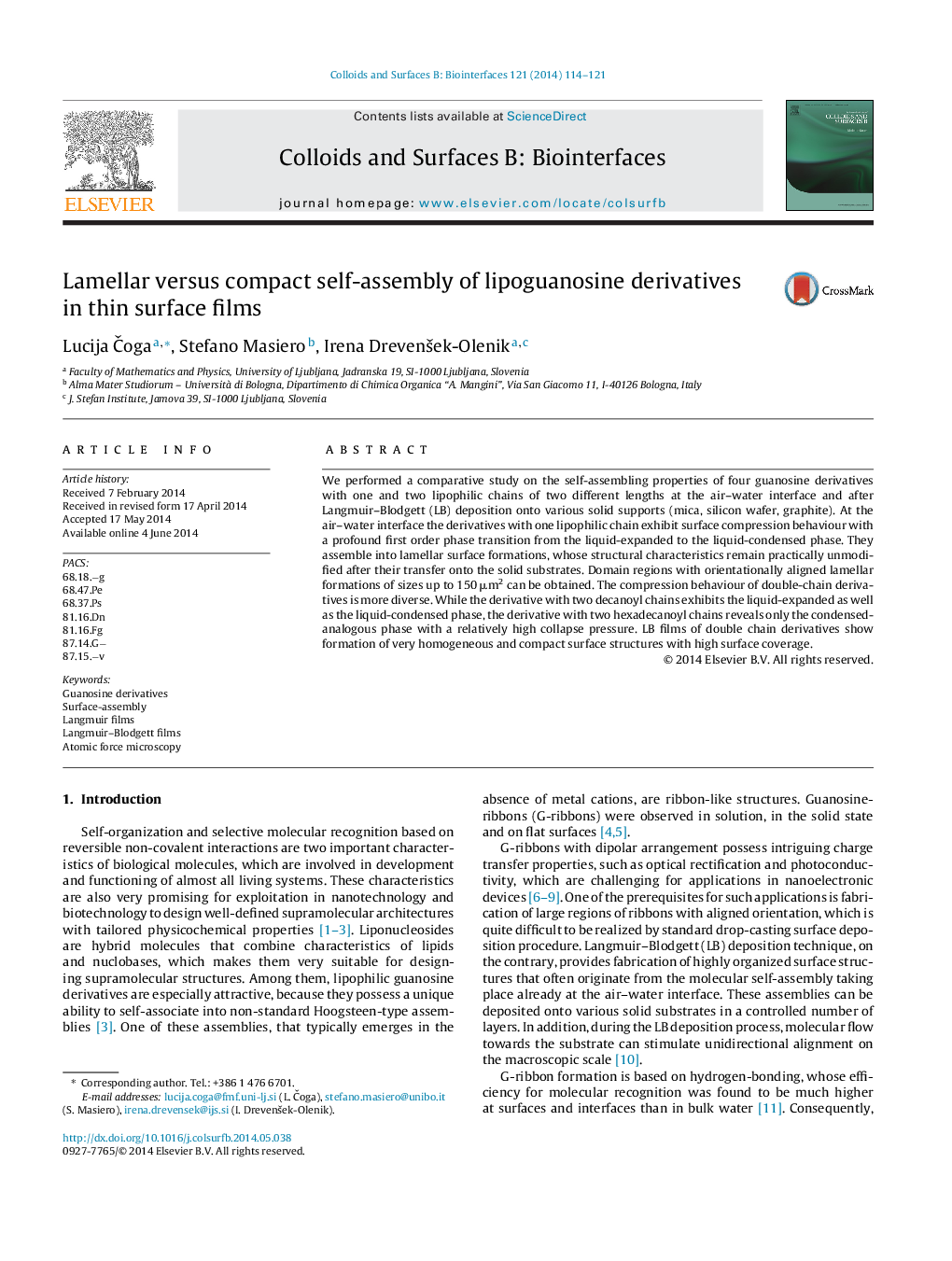| Article ID | Journal | Published Year | Pages | File Type |
|---|---|---|---|---|
| 599614 | Colloids and Surfaces B: Biointerfaces | 2014 | 8 Pages |
We performed a comparative study on the self-assembling properties of four guanosine derivatives with one and two lipophilic chains of two different lengths at the air–water interface and after Langmuir–Blodgett (LB) deposition onto various solid supports (mica, silicon wafer, graphite). At the air–water interface the derivatives with one lipophilic chain exhibit surface compression behaviour with a profound first order phase transition from the liquid-expanded to the liquid-condensed phase. They assemble into lamellar surface formations, whose structural characteristics remain practically unmodified after their transfer onto the solid substrates. Domain regions with orientationally aligned lamellar formations of sizes up to 150 μm2 can be obtained. The compression behaviour of double-chain derivatives is more diverse. While the derivative with two decanoyl chains exhibits the liquid-expanded as well as the liquid-condensed phase, the derivative with two hexadecanoyl chains reveals only the condensed-analogous phase with a relatively high collapse pressure. LB films of double chain derivatives show formation of very homogeneous and compact surface structures with high surface coverage.
Graphical abstractFigure optionsDownload full-size imageDownload as PowerPoint slide
